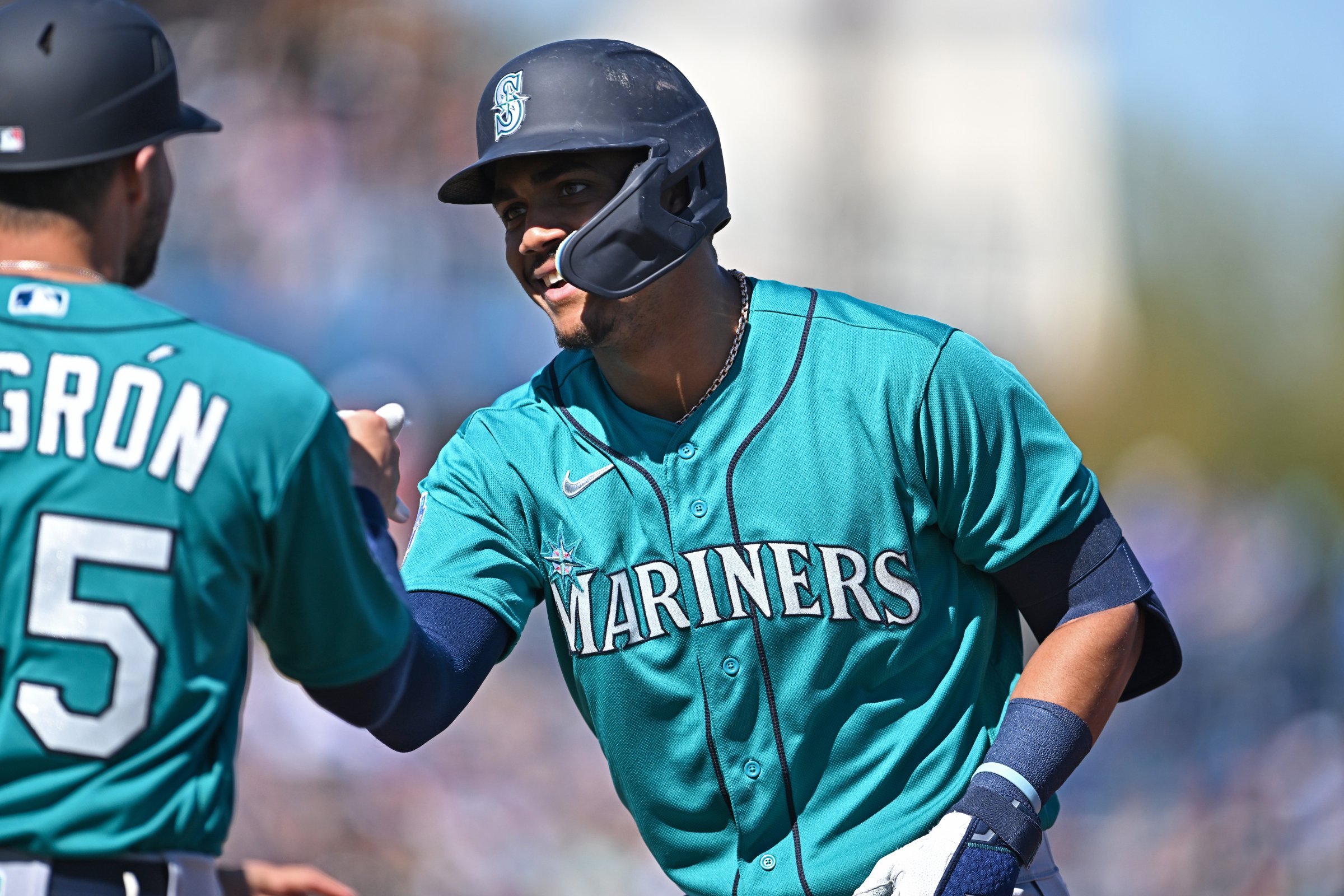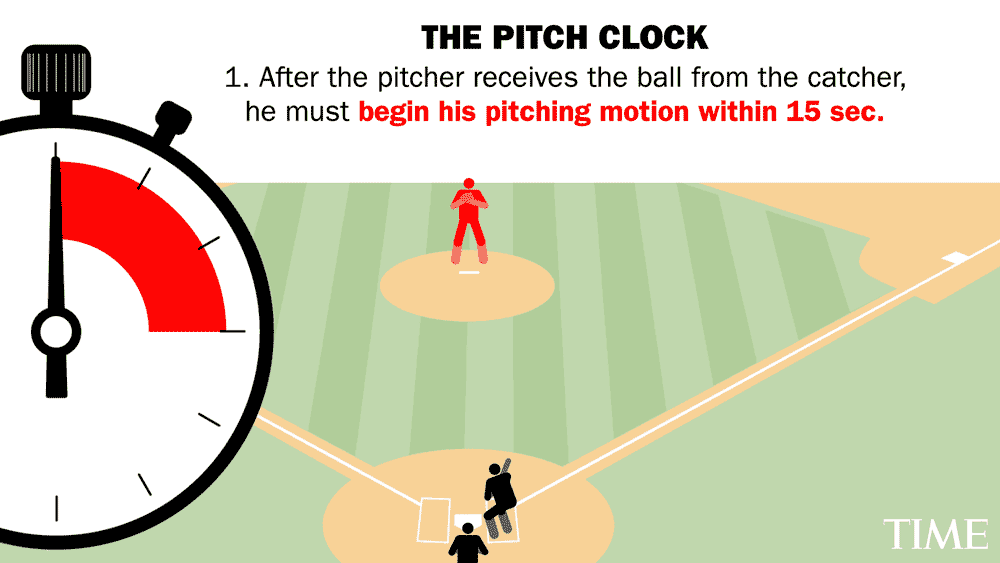
Tomorrow is opening day in Major League Baseball, a fine time as any to get all gooey about our national pastime. Hope springs eternal, and all that jazz. Nostalgia rules the day. Every team, at this moment, has a shot at a World Series.
I count myself among the millions who love and appreciate the rhythms, the history, and the characters that define baseball. Heck, I’m so old that I remember when baseball was cool.
You know, sort of how basketball is now—with all the kids these days wearing Steph Curry and LeBron James jerseys, and sharing dunk highlights on the social medias. Or football, the country’s most popular sport. Or even soccer, with its global imprint and epic quadrennial events, the World Cup.
Baseball’s been cool in the past. Joltin’ Joe DiMaggio carried himself like royalty. Willie Mays—“The Say Hey Kid”—proffered a style all his own. Mickey Mantle — “the Mick”—inspired mass devotion. Players had cool nicknames. Musicians penned songs about these guys.
When I was growing up, in the 1980s, Ozzie Smith was doing backflips on the field. Rickey Henderson was stealing hundreds of bases. In New York City, Darryl Strawberry of the Mets stood 6’6”, with a long, looping swing that sent rainbow-shaped homers to the sky. His teammate, Dwight Gooden—“Dr. K.”—was equally electric, whiffing batters at a record pace.
You dared not miss a moment. Baseball drove sports culture. Even a goofy Saturday-morning instructional TV show hosted by Johnny Bench—The Baseball Bunch—became must-see TV for trading-card-collecting Little Leaguers obsessed with playing second base. In the 1990s, Ken Griffey Jr. flashed his smile, turned his hat backward, and scaled walls to rob home runs. In the 2000s Derek Jeter was King of New York. You can’t deny that was cool.
Read More: Willie Mays Does Not Hold Back in New HBO Documentary on His Life
Any reasonable observer would agree, in recent years, baseball’s lost some cool. Great modern-day players like Aaron Judge, Mike Trout, and Shohei Ohtani excel on the field. But these stars don’t crave limelight. No baseball player has the cultural clout of a James or Curry or Tom Brady or Patrick Mahomes or a Lionel Messi. Plus, the game itself has devolved into a predictable mix of strikeouts, home runs, and three-hour-plus affairs.
MLB is aware of these problems. To its credit, the league has taken tangible steps this year to shorten games and add more action. Further, a crop of charismatic young players like Juan Soto, Vladimir Guerrero Jr., Ronald Acuña Jr., and particularly second-year standout Julio Rodriguez, who, like Griffey Jr. performs out of the Pacific Northwest, promise to bring more buzz back to baseball.
The New Rules
In 2023, baseball is introducing three new initiatives.

The first is a pitch clock, similar to the shot clock in basketball. With no runners on base, a pitcher must throw to the plate in 15 seconds; 20 second with runners on. Batters receive one timeout per plate appearance. Pitchers can disengage from the rubber—to throw to a base for a pickoff, or simply to step off—only twice during an at-bat. The pitcher can make a third pickoff attempt is made, but if it’s unsuccessful, the runner automatically advances a base.
According to MLB, these limits on pickoff attempts in the minor leagues led to a 26% increase in stolen-base attempts. The running game has faded in importance in baseball in recent years, and MLB is trying to revive that area of the game. In 2022, the pitch clock made games 25 minutes shorter in the minors.
During this year’s spring training, the pitch clock won over some skeptics. “I’m an old baseball guy,” says former pitcher Jeff Brantley, a broadcaster for the Cincinnati Reds who spent 14 seasons, from 1988-2001, in the big leagues. “I believe in how you’re supposed to play. Seeing some of this stuff, I thought, ‘This is just going to be Mickey Mouse.’ But I think the clock is awesome.”
Brantley appreciates the speed. “It’s almost like you’re sitting there, and every scene in the movie is an action scene,” he says. “Our world has really changed from coming to the ballpark and just killing some time for three or four hours. A few beers, a hot dog, just sitting out in the sun, or you’re enjoying a summer night. There ain’t too many folks sitting on the back porch, brother. They’re on their phone, or they’re on their computer, and they want their information and they want it right now. Making action front and center, as soon as you get into the ballpark, it’s going to resonate with the younger folks.”
Read More: 2022 Athlete of the Year: Aaron Judge
Another tweak promising to create more action is a ban on the infield shift. Thanks to data advances in baseball, teams knew the hitting tendencies of players all too well. So if a batter was more likely than not to, for example, hit the ball to the left side of the infield, teams could overload fielders in that space, taking away hits. Now, two infielders must be positioned on each side of second base, with their feet in the dirt. This fix should also allow for more athletic plays in the field. Shortstops and second basemen, for example, will have to dive for balls up the middle or in the short outfield, rather than position themselves there in the shift, which they’ve been doing with alarming frequency in recent years.
“Those are the plays that, at the end of the day, the kids are watching late at night,” says Brantley. “They ‘ooooh’ and ‘aaaaah’ and they pick up their phone and they text their buddies, ‘Did you see this?’ If that play never happens, then you know what? The conversation about baseball never begins.”
MLB is also increasing the size of its bases, reducing the distance between first and second base, and second and third base, by 4.5 inches. This slight tweak could also have a big impact on base running. Many stolen-base attempts are very close calls. So runners might be more willing to risk it with a few-inch advantage.
“Even if he never runs, if you’re in the stands and you’d think he might be running, you’re on the edge of your seat,” says Brantley.
The Julio Show
While rules changes should help baseball evolve into a more modern, attractive product, personalities always rule sports. Julio Rodriguez, the second-year center fielder for the Seattle Mariners, turned in one of the best rookie seasons in the sport. He became the first player in major league history with 15 or more home runs, 50 or more RBIs, and 20 or more stolen bases in his first 90 career games. According to one advanced datapoint on power and production, Rodriguez, 22, joined Mike Trout, Albert Pujols, and Ted Williams as the best rookie position players ever. He helped the Mariners end the longest active playoff drought in the “big four” North American pro sports—21 years. The campaign compelled Seattle to sign “J-Rod” to a 12-year, $210 million contract extension—in his rookie season.
What’s more, J-Rod desires crossover appeal. He dresses sharp. He has stunning eyes that stare into your soul. He engages with fans and the culture via his YouTube channel and social media. He just did clever Bob Villa and The Bachelor parodies. He tried to swim on the bases after a stumble and embraced the ribbing. He’s turned centerfield into a “no fly zone.” He slammed 81 home runs at the All-Star home run derby.
He’s just what baseball needs in this moment: player with prodigious talent and an infectious personality, giving viewers reason to watch him, his team, and his sport. “There was a time where, if you were a young guy and you showed too much personality, organizations and some managers didn’t like that,” says former outfielder Gary Matthews Jr., who played in the majors from 1999-2010. “They didn’t like players to express themselves or express their emotions. That was kind of frowned upon. But someone like Rodriguez in Seattle, here’s a really, really young guy who seems to be a really not only a great player, but also a great person. At the end of the day, fans will connect better with a generation of players who are allowed to be authentically themselves.”
So happy opening day. The Cincinnati Reds are still in contention. The games will be quicker. Julio Rodriguez will be worth watching.
And baseball could be cool again.
More Must-Reads from TIME
- Donald Trump Is TIME's 2024 Person of the Year
- Why We Chose Trump as Person of the Year
- Is Intermittent Fasting Good or Bad for You?
- The 100 Must-Read Books of 2024
- The 20 Best Christmas TV Episodes
- Column: If Optimism Feels Ridiculous Now, Try Hope
- The Future of Climate Action Is Trade Policy
- Merle Bombardieri Is Helping People Make the Baby Decision
Write to Sean Gregory at sean.gregory@time.com